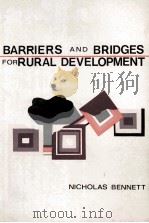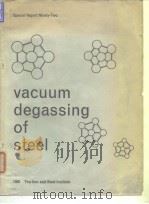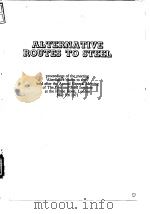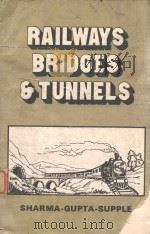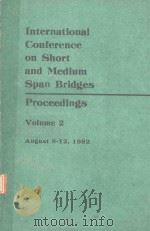《MOVABLE AND LONG SPAN STEEL BRIDGES HOOL AND KINNE》
| 作者 | 编者 |
|---|---|
| 出版 | 未查询到或未知 |
| 参考页数 | 496 |
| 出版时间 | 没有确切时间的资料 目录预览 |
| ISBN号 | 无 — 求助条款 |
| PDF编号 | 819550158(仅供预览,未存储实际文件) |
| 求助格式 | 扫描PDF(若分多册发行,每次仅能受理1册) |

Section 1.Bascule Bridges1
DESIGNS AND TYPES OF BASCULE BRIDGES1
1.Early types1
2.Advant ages inherent in the bas-cule type1
a.Rapidity of operation1
b.Interference with channel during operation2
c.Duration of opening2
d.Pier considerations2
e.Adaptability to wide road-ways3
f.Safety to land traffic4
g.Effect of collisions with river craft5
h.Bascule vs.vertical lift5
3.Relative economy of the bascule type5
4.Cable lift bascules8
a.Spiral counterweight drums10
b.Sectional counterweights13
c.Curved track,and rolling counterweight13
5.Roller lift bascules15
6.Trunnion type bascules19
a.Simple trunnion or“Chic-ago”type20
b.Strauss type24
7.Semi-lift bascule spans25
8.Other types of bascule spans27
SELECTION OF TYPE OF BASCULE BRIDGES29
9.Single vs.double leaf29
10.Through vs.deck spans33
11.Arrangement of piers37
12.Relative merits of different types38
BASCULE SUPERSTRUCTURE DESIGN AND ERECTION PROBLEMS39
13.Balance requirements39
14.Live load stresses43
15.Dead load stresses46
16.Wind load stresses47
17.Floor design48
18.Erection features to be considered in the design49
19.Counterweights51
20.Design specifications peculiar to bascules57
FOUNDATIONS FOR BASCULE SPANS58
21.Conditions peculiar to bascule spans58
22.General description of a typical bascule pier63
23.Counterweight pits64
24.Anchor columns65
25.Tremie seal66
26.Operator's houses69
27.Pier fenders71
COMPLETE STRUCTURAL DESIGN OF A DOUBLE LEAF SIMPLE TRUNNION DECK BASCULE HIGHWAY BRIDGE71
28.Data73
a.General description73
b.Governing dimensions75
c.Loads75
d.Permissible stresses76
e.Counterweights78
f.Anchor arm lateral system78
g.Buffer blocks78
29.Design of floor system79
a.Flooring79
b.Stringers and floor beams79
c.Horizontal girder81
30.Design of main truss members81
a.Preliminary calculation of dead loads83
b.Determination of dead load stresses in counterweight arm86
c.Live load stress diagrams88
d.Shear lock stresses89
e.Dead load stresses—leaf open91
f.Wind load stresses92
g.Impact stresses92
31.Design of lateral system93
32.Miscellaneous parts of the moving leaf98
33.Fixed part99
a.Floor slab99
b.Stringers100
c.Columns on main girder100
d.Main trunnion girder101
e.Grillage braces103
34.Counterweight calculations and methods of balancing span104
DESIGN OF OPERATING MACHINERY124
35.General data for problem in hand124
36.Wind pressure assumptions125
37.Friction on trunnions125
38.Maximum starting force at the rack circle126
a.Inertia of the moving mass126
b.Wind resistance127
c.Frictional resistance127
d.Total tangential force at rack circle128
39.Design of rack and main drive pinion128
40.Machinery Iayout133
41.Design of gearing135
42.Design of shafting140
43.Keys for shaft S1143
44.Hand operating mechanism143
45.Centerlock mechanism144
46.Motor power required for center lock145
47.Design of center lock shafting149
48.Design of pin(P1)in crank149
49.Design of gearing for center lock drive150
50.Calculation for bearings for main pinion shaft152
51.Design for main trunnions152
52.Design of hand brakes154
Section 2.Vertical Lift Bridges158
1 Advantages of vertical lift bridges158
2.Classification of vertical lift bridges160
3.Adaptability of the different types of vertical lift bridges161
4.Description of a few vertical lift bridges163
5.General design notes172
Section 3.Swing Bridges180
CENTER-BEARING SWING BRIDGES180
1.General considerations180
2.Conditions of loading180
3.Stresses in a swing span182
4.Positive shear in panel 0-1.Case Ⅲ184
5.Positive moment about U3.Case Ⅲ186
6.Negative shear in panel 0-1.Case Ⅳ187
7.Shear in panel 1-2188
8.Shear in panel 2-3189
9.Shear in panel 3-4189
10.Shear in panel 4-5190
11.Shear in panel 5-6190
12.Moment about L2191
13.Moment about L4191
14.Moment about U5192
15.Moment about L6192
16.Case V,both arms loaded.Broken loads192
17.Negative shear in panel 5-6193
18.Moment about L6194
19.Dead load,bridge open.Case Ⅰ194
20.Dead load,ends raised.Case Ⅱ194
21.Combinations194
22.Reactions from Williot diagram194
RIM-BEARING SWING BRIDGES196
23.General considerations196
24.Partial continuity.Equal moments at center supports197
Section 4.Continuous Bridges199
DESIGN AND ERECTION OF CONTINUOUS BRIDGES199
1.Advantages of continuous bridges199
2.Economic comparisons with simple spans199
3.Economy of the continuous type200
4.Prejudices against the continuous type200
5.Conditions favorable for the continuous type201
6.Economic proportions and number of spans201
7.History of continuous bridges202
8.The Seiotoville Bridge202
9.Erection of the Sciotoville bridge208
10.The Allegheny River continuous bridge211
11.Ercetion of the Allegheny River bridge214
12.The Nelson River continuous bridge214
13.Ereetion of the Nelson River bridge217
14.The C.N.O.bridge at Cin-cinnati217
STRESSES IN CONTINUOUS BRIDGES218
15.The elastic curve218
16.Elastic curves for constant I218
17.Influence diagram for bending inoments220
18.Influence diagram for shears222
19.Two equal spans with symmetrical loading223
20.Two unequal spans223
21.Reactions for two continuous spans225
22.Moments and shears for two unequal spans225
23.Elastic curve for variable I226
24.Special case—Triangular variation of I227
25.Elastic curve for a continuous truss230
26.Example—Application of method to Sciotoville bridge232
27.Comparison of elastic curves for different assumptions234
28.Influence diagrams for contin uous trusses236
29.Determination of live load stresses236
30.Determination of dead load stresses237
31.Bridges continuous over three spans237
32.Elastic curves for three-span continuous bridge237
33.Symmetrical three-span contin-uous girders241
34.Influence diagrams for three-span continuous bridge244
35.The method of double influence lines246
36.Continuous bridge of three equal spans249
37.Multiple-span continuous girders249
38.Fixed points in continuous spans250
39.General rules for loading place-ment252
40.Effect of settlement of supports253
41.Example—Effect of settlement in Sciotoville bridge255
Section 5.Cantilever Bridges256
1.Cantilever bridges compared with continuous bridges256
2.The cantilever bridge as a de-velopment of the contin-uous bridge256
3.Statically determinate and stat-ically indeterminate canti-lever bridges257
4.Conditions of statical determi-nation257
5.Examples of cantilever bridges261
6.Computation for moments and shears262
7.Reactions for an indeterminate cantilever bridge269
8.Erection of cantilever bridges270
9.Special details270
a.Erection adjustments270
b.Anchorages275
c.Lateral systems279
d.Stringer expansion bearings280
10.Economy281
11.Relative rigidity283
12.Economical ratios of span lengths283
13.Miscellaneous data284
14.Arched cantilever bridges285
15.Some esthetic considerations288
Section 6.Suspension Bridges289
STRESSES IN SUSPENSION BRIDGES289
1.The cable289
a.Form of the cable for any loading289
b.The parabolic cable290
c.Unsymmetrical spans291
d.The catenary293
e.Deformations of the cable294
2.Unstiffened suspension bridges294
a.Stresses in the cables and towers295
b.Deformations under central loading295
c.Deformations under unsym-metrical loading296
d.Deflections due to elongation of cable296
3.Stiffened suspension bridges297
a.Assumptions used298
b.Fundamental relations299
c.Influence lines301
4.Three hinged stiffening trusses302
a.Analysis302
b.Moments in the stiffening truss303
c.Shears in the stiffening truss304
5.Two-hinged stiffening trusses306
a.Determination of the hori-zontal tension H306
b.Moments in the stiffening truss310
c.Shears in the stiffening truss311
d.Temperature stresses313
e.Deflections in the stiffening truss313
f.Straight backstays314
6.Hingeless stiffening trusses315
a.Fundamental relations315
b.Moments at the tower316
c.The horizontal tension H317
d.Moments in the stiffening truss318
e.Temperature stresses319
f.Straight backstays320
7.Braced-chain suspension bridges321
a.Three-hinged type321
b.Two-hinged type322
c.Hingeless type323
DESIGN OF SUSPENSION BRIDGES—CONSTRUCTION FEATURES324
8.Types of suspension bridges324
9.Economic proportions326
10.Chain construction327
11.Parallel wire cables328
12.Twisted wire ropes330
13.Towers332
14.Saddles332
15.Anchorages333
DESIGN CALCULATIONS FOR TWO-HINGED SUSPENSION BRIDGE WITH SUSPENDED SIDE SPANS333
16.Dimensions335
17.Stresses in cable335
18.Moments in stiffening truss—main span336
19.Bending moments in side spans338
20.Shears in stiffening truss—main span338
21.Shears in side spans340
22.Temperature stresses341
23.Wind stresses in bottom chords342
24.Design of tower343
25.Movement of top of tower343
26.Forces acting on tower344
27.Calculation of stresses in tower345
28.Wind stresses in tower345
29.Calculation of cablewire346
30.Calculation of cable diameter346
31.Calculation of wrapping wire347
32.Estimate of rope strand cables347
ERECTION OF SUSPENSION BRIDGES347
33.Erection of the towers347
34.Stringing the footbridge cables349
35.Erection of footbridges349
36.Initial erection adjustments350
37.Spinning of cables352
38.Erection of trusses and floor system353
39.Final erection adjustments54
40.Cable wrapping355
41.Erection of wire rope cables356
42.Erection of eyebar chain bridges357
43.Time required for erection357
Section 7.Steel Arch Bridges—General359
1.Classification and types of steel arch bridges359
2.Relative merits of various types of arch construction362
a.Fixed or hingeless type362
b.Single hinge type362
c.Two-hinged type362
d.Three-hinged type362
e.Various types in general363
3.Loadings on arch bridges363
4.Erection of arch bridges364
5.General design features368
a.Shape of arch368
b.Temperature stresses371
c.Location of crown hinge372
d.Tied arches373
Section 8.Analysis of Three-hinged Arch Bridges375
1.Equilibrium polygons375
2.Algebraic calculation of reac-tions378
3.Stresses due to moving loads(method of reaction lines)378
4.Influence lines for three-hinged arches381
5.Fiber stresses in solid ribbed arch spans385
6.Graphical analysis of stresses388
7.Wind stresses in spandrel-braced arch spans388
Section 9.Analysis of Fixed Arches393
FUNDAMENTAL THEOREMS RELATING TO INTERNAL WORK IN RIBS AND FRAMES393
1.The laws of internal work in structural frames393
2.Deflections and panel point dis-placements in frames396
3.Work expressions for solid web beams and cantilevers400
a.Derivation of expressions for internal work in ribs and beams404
4.Displacements and deflections in beams and ribs406
DEVELOPMENT OF THE GENERAL ELASTIC EQUATIONS FOR ARCH FRAMES OR TRUSSES5.Redundant forces in a fixed framed arch408
6.Residual frames409
7.Properties of the residual frame410
8.Development of the general elastic equations412
ELASTIC INFLUENCE LINES FOR FIXED FRAMED ARCHES414
9.Simplification of elastic equa-tions414
10.Application of above simplified formulas420
11.Horizontal and inclined loads426
12.Direction of the redundant forces426
THE ANALYSIS OF FIXED FRAMED ARCHES(SYMMETRICAL AND UNSYMMETRICAL SPANS)426
13.Unsymmetrical spans429
14.Symmetrical spans439
DEVELOPMENT OF GENERAL ELASTIC EQUATIONS FOR RIB ARCHES440
15.Development of formulas440
DEVELOPMENT OF ELASTIC INFLUENCE LINES FOR RIB ARCHES446
16.Development of formulas446
17.Graphical solution for redun-dant influence diagrams449
18.Stresses due to uniform temper-ature changes450
19.Stresses due to a variable tem-perature change452
20.Stresses due to rib shortening or axial thrust453
21.Symmetrical arch ribs454
COMPLETE ANALYSIS OF A 350-FT.FIXED STEEL ARCH RIB455
Section 10.Analysis of Two-hinged Arches483
INDEX489
《MOVABLE AND LONG SPAN STEEL BRIDGES HOOL AND KINNE》由于是年代较久的资料都绝版了,几乎不可能购买到实物。如果大家为了学习确实需要,可向博主求助其电子版PDF文件。对合法合规的求助,我会当即受理并将下载地址发送给你。
高度相关资料
-
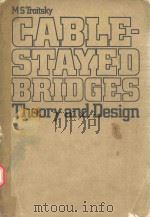
- CABLE-STAYED BRIDGES THEORY AND DESIGN
- 1977 COPYRIGHT
-

- FATIGUE AND FRACTURE IN STEEL BRIDGES
- A WILEY INTERSCIENE PUBLICATION
-

- FIRE AND STEEL
- HARLEQUINBOOKS
-
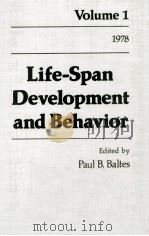
- Life-Span development and Behavior
- 1978 Academic Press
-

- CONSTRUCTION AND DESIGN OF CABLE-STAYED BRIDGES
- 1976 COPYRIGHT
-
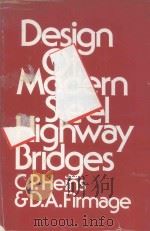
- DESIGN OF MODERN STEEL HIGHWAY BRIDGES
- 1979 COPYRIGHT
-
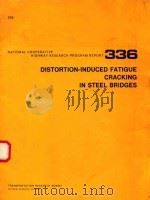
- DISORTION-INDUCED FATIGUE CRACKING IN STEEL BRIDGES
- 1990 TRANSPORTATION RESEARCH BOARD
-

- STEEL AND SLAG
- 1951 FOREIGN LANGUAGES PUBLISHING HOUSE
-

- MOBILE AND MOVABLE CRANES
- 1963 CR BOOKS LTD
提示:百度云已更名为百度网盘(百度盘),天翼云盘、微盘下载地址……暂未提供。➥ PDF文字可复制化或转WORD
